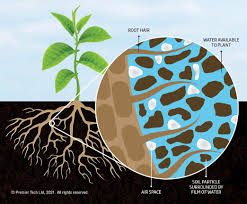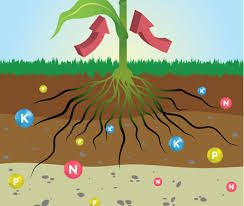For nutrients to be taken by the plant, they must be in a soluble form and located very close to the roots of the plants. Some of the root mass is so close to the soil particles that there is direct exchange of nutrients between them.
However, when the close nutrient sink is exhausted, the question becomes how the root will obtain additional nutrients from the soil. This is the focus of this article, to explain how nutrients are taken by plant roots.
Mechanisms of Nutrient Uptake in Plant Roots
Nutrient elements must be in a soluble form and located at the root surface to be taken up by a plant.
Often, parts of a root are in such intimate contact with soil particles that a direct exchange may take place between nutrient ions adsorbed on the surface of soil colloids and H⁺ ions from the surface of root cell walls.
There are three basic mechanisms by which the concentration of nutrient ions at the root surface is maintained.
Read Also: Floribunda Rose Flowers: All You Need To Know About
Root Interception in Nutrient Acquisition

Root interception comes into play as roots continually grow into new, undepleted soil. Nutrient ions must also travel some distance in the soil solution to reach the root surface. This movement takes place by mass flow.
Mass Flow in Nutrient Transport to Roots
Mass flow occurs when dissolved nutrients are carried along with the flowing soil water toward a root that is actively drawing water from the soil. On the other hand, plants can continue to take up nutrients even at night, when water is only slowly absorbed into the roots. Nutrient ions continually move by diffusion.
Diffusion in Nutrient Movement to Roots
Diffusion occurs from areas of greater concentration toward the nutrient-depleted areas of lower concentration around the root surface. The diffusion process is independent of any mass flow of water in which the ions are dissolved.
Factors Affecting Nutrient Uptake in Soils
Factors such as soil compaction, cold temperatures, and low soil moisture content, which reduce root interception, mass flow, or diffusion, can result in poor nutrient uptake by plants even in soils with adequate supplies of soluble nutrients.
Read Also: Mimosa Flowers (Mimosa Pudica): Complete Growing and Care Guide
Role of Microorganisms and Root Membranes in Nutrient Uptake

Availability of nutrients can also be positively or negatively affected by microorganisms that thrive in the immediate vicinity of roots. The plant membrane separating the inside of the root cell from the soil solution is permeable to dissolved ions only under special circumstances.
Nutrients are taken up when a chemical carrier molecule in the root cell membrane forms an activated complex with the nutrient and then travels across the membrane to the interior of the root cell before releasing the nutrient.
Soil nutrients are either scavenged for and intercepted by the roots before uptake, or dissolved plant nutrients move in the soil and then come in contact with root hairs (mass flow).
Nutrients can also be taken through the movement of nutrients from areas of high concentration to low concentration (diffusion).
Do you have any questions, suggestions, or contributions? If so, please feel free to use the comment box below to share your thoughts. We also encourage you to kindly share this information with others who might benefit from it. Since we can’t reach everyone at once, we truly appreciate your help in spreading the word. Thank you so much for your support and for sharing!

